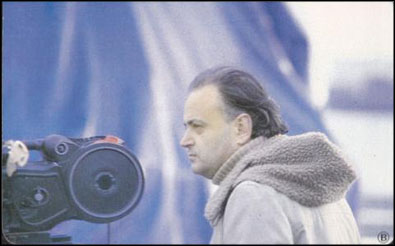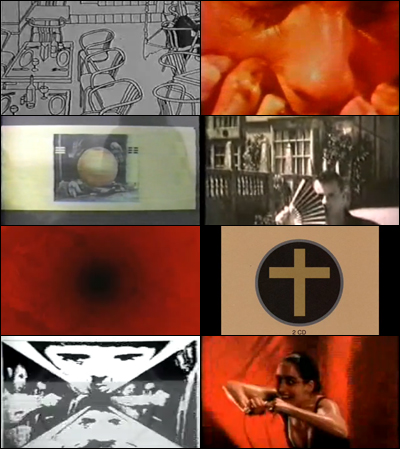Artist and researcher M.S. leDespencer has kindly written the following obituary in honor of Kenneth Grant. The more esoterically inclined readers of Coilhouse will immediately recognize that name. Those who are unfamiliar –but curious– may wish to click the many hyperlinks attached below and begin to explore Grant’s strange and beautiful work. Condolences to Grant’s widow, Steffi, their family, and friends. ~Mer

Portrait of Kenneth Grant by Austin Osman Spare
“So life takes fire from death and runs. Whirling amidst the suns.”
~A. Crowley
Liber Pyramidos
It was announced today that occultist, author, artist, and gentleman Kenneth Grant passed away after an illness on January 15, 2011. He was 86 years old.
Grant, long a compelling figure in the world of occultism, has a legacy that extends back over half a century. He was the last man alive to have close ties to Aleister Crowley, having served as personal secretary to “The Beast”, and having been initiated into the Ordo Templi Orientis and Argentum Astrum by Crowley himself. After Crowley’s death, Grant and his wife Steffi were among the few attendees at Crowley’s funeral service. Subsequently, Grant became well known for helping to keep Crowley’s concepts and philosophies alive in the troubled decades following his death, and for the further continuation and expansion of Thelemic ideas over six decades.
Kenneth Grant’s occultism was not the fervent, dry adherence of the ideologue. Rather, he fashioned a deeply personal, fantastical, dynamic, and intricate system of magic woven together from syncretic elements of Tantra, Voudon, Gnosticism, Surrealism, fiction and a variety of other exotic threads. Building on the foundations of Crowley’s work, Grant expanded the current understanding of the meaning and implications of the “Law ofThelema”. Much like the mystic William Blake, Grant forged his own path beyond esoteric speculation, writing first-hand accounts of what he perceived to exist outside of the range of mundane experience.
Over the course of sixty years, Grant cataloged his evolving exploration of Crowley’s system of Magick and philosophy across a series of nine books that came to be known as the Typhonian Trilogies. Grant had stated that he wanted the act of reading these books to be an esoteric experience in and of itself. Certainly, the trilogies contain a maelstrom of esoteric ideas, dream imagery, and highly technical esotericism that, for the receptive reader, can border on a consciousness-altering experience. In addition to these seminal works, Grant wrote a variety of articles, fiction, and poetry, all of which are being made available via his official publisher, Starfire.

Portrait of Steffi and Kenneth Grant by Austin Osman Spare
Grant is also responsible for the enduring legend of the occultist and artist Austin Osman Spare, who had a profound influence on both his and Steffi’s art and world view. As Spare’s executor, Grant helped to catalog and publish Spare’s paintings, drawings, and writings, securing his friend’s art the long-term influence and respect it wields today. Were it not for the Grant’s loyal championing, the world would most likely lack knowledge of the rich, haunting body of work that Spare left behind.
Mr. Grant is survived by his aforementioned wife, the artist Steffi Grant –who has been an integral presence in Grant’s work since the beginning– and their family. His work continues via the Typhonian Order and individual explorers the world over. Through whatever strange spheres or iridescent geometric shapes he may choose as his vehicle among the scintillating transplutonian stars, may his journey continue!














